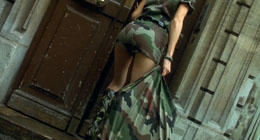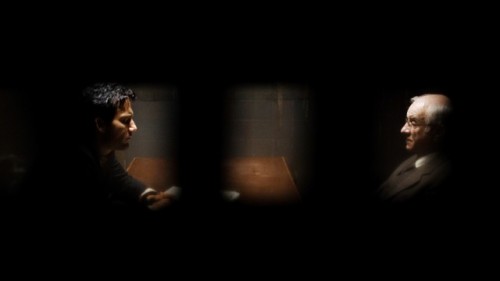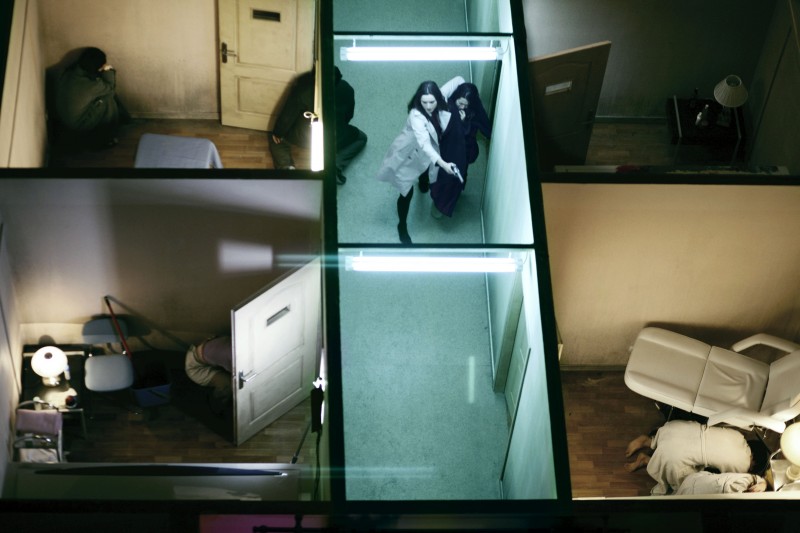COMPARES TO DE PALMA, SPIELBERG, PECKINPAH, ROSI
 Armond White reviewed Tom Tykwer's The International last week in the New York Press. White found the film "simplistic," noting that "emotion and politics are not director Tom Tykwer’s things." White highlights Tykwer's ambitious Guggenheim Museum set piece, and mentions three Brian De Palma films throughout the review. Here is an excerpt:
Armond White reviewed Tom Tykwer's The International last week in the New York Press. White found the film "simplistic," noting that "emotion and politics are not director Tom Tykwer’s things." White highlights Tykwer's ambitious Guggenheim Museum set piece, and mentions three Brian De Palma films throughout the review. Here is an excerpt: A credible emotional point of view is rare in action movies; problem is, emotion and politics are not director Tom Tykwer’s things. Despite the clear outline of worldwide greed in Eric Warren Singer’s screenplay, The International is terribly simplistic. Using the IBBC as a metaphor for Capitalism, Singer assesses the self-interest that makes the world turn. But except for Owen and Watt’s empathetic portrayals this is essentially a cloak-and-dagger programmer pumped-up De Palma-style.
Tykwer sends Owen and Watts through a series of show-off set pieces. None express psychic turmoil like De Palma’s extravaganzas: A sequence at Berlin’s National Gallery featuring Arnold Bocklin’s Isle of the Dead salutes the great museum scene in Dressed to Kill without defining Salinger’s disposition through the art work...Of the many climaxes in this climax-stuffed cautionary tale, it is the clash at the Guggenheim Museum—where Salinger has trailed an assassin—that get Tykwer’s most flamboyant. It’s allegory for global anarchy and destruction. Salinger and the assassin recognize their common humanity, then their tension and obstacles escalate. This sequence is an ambitious combination of moral conflict and bravura aesthetics. Configured to match the sloping, slanting, continually changing perspectives of the Guggenheim’s rotunda, the scene attempts to out-do the visceral curlicues of Tykwer’s first hit, Run Lola Run. It visualizes Salinger’s dizzying, uphill struggle and 360-degree paranoia. Tykwer daringly intercuts video installations (actually from the Hamburger Bahnhof by Julian Rosenfeldt). As Salinger’s targets shift and danger boomerangs, capitalism itself becomes an Abstract Expressionist version of the Disasters of War. This tour de force is more accomplished than any of the set pieces in Children of Men—or Zodiac for that matter—yet it fails to drive home the sadness in Salinger’s eyes, unlike the astonishing photo-realist mural in Femme Fatale that summarized its heroine’s life journey.
Instead, as Tykwer goes on to other tricky chases and sensational killings, The International becomes more routine and shallow—even as it pretends to uncover the intricacies of small-arms trading, Middle East subterfuge, collateral damage and varieties of ethnic revenge. Although audiences chuckle when Armin Mueller-Stahl’s jaded banker explains to Salinger, “Life is stranger than fiction, fiction has to make sense,” the unfunny joke is on the way contemporary political fiction (in movies) rarely makes sense of our moral alarm. One reason lies in Tywker’s fanciful/serious approach. Though stylish, it lacks the aesthetic-moral force of such political thrillers as Francesco Rosi’s Exquisite Corpses, Peckinpah’s The Killer Elite, Spielberg’s Munich or DePalma’s Blow Out.
When we’re told that “We’re all slaves to debt” or that war comes from “banks committing so much of its resources sale of weapons” and that cynical news is matched with cleverly staged assassination scenes in anonymous crowded cities, it means that The International isn’t any better than Children of Men. Although war and financial crises are distressing, today’s moviegoing generation doesn’t know the culture shock of assassination and disillusionment that informed Rosi, Peckinpah, Spielberg and De Palma that movies like this merely exploit. Owen pantomimes feeling, but through political snark and snazzy technique, we’ve lost the beauty of art with feeling.
Updated: Thursday, February 19, 2009 4:56 PM CST
Post Comment | Permalink | Share This Post




 Romain Desbiens has been doing some outstanding work at
Romain Desbiens has been doing some outstanding work at 



 A
A 
 Rie Rasmussen's directorial feature debut, Human Zoo, kicked off the
Rie Rasmussen's directorial feature debut, Human Zoo, kicked off the 